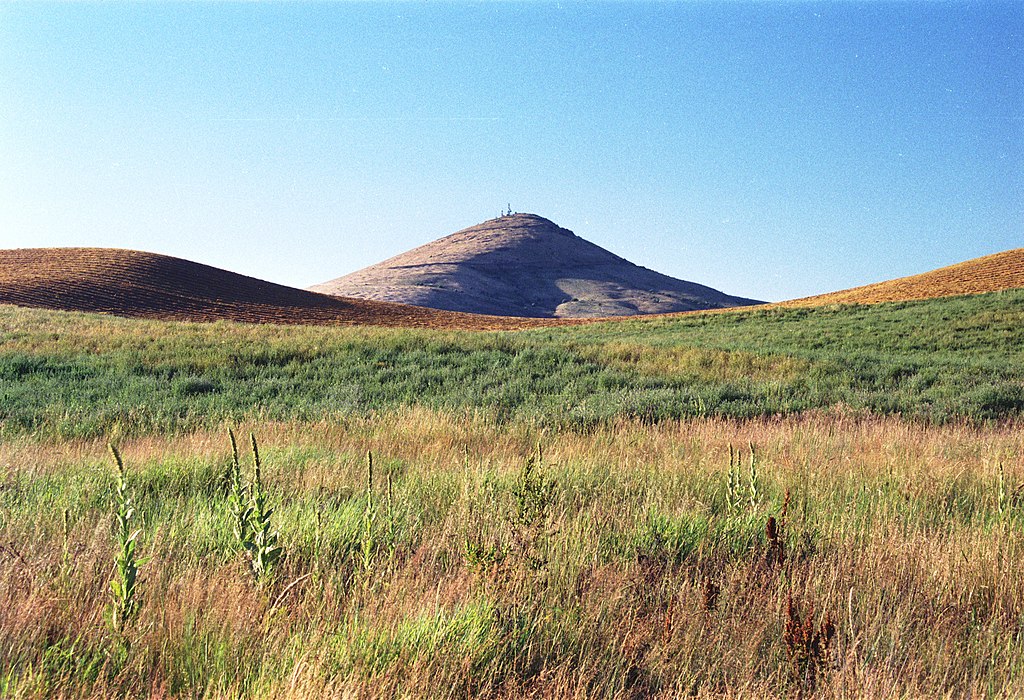Steptoe Butte, an iconic landmark in Whitman County, Washington, stands as a testament to the region’s fascinating geological history and natural beauty. This Steptoe Butte travel guide aims to provide an in-depth exploration of the butte’s geological significance, diverse flora and fauna, recreational activities, and cultural insights. Whether you’re a nature enthusiast, a history buff, or simply seeking a scenic adventure, Steptoe Butte offers a unique experience that captures the essence of Whitman County.

Table of Contents
Geological Significance of Steptoe Butte
Steptoe Butte’s geological origins are a captivating tale of volcanic activity and ancient geological processes. Formed millions of years ago during the Miocene Epoch, the butte is composed of quartzite that was thrust upwards through the surrounding basalt, creating a prominent dome that rises sharply from the Palouse Hills. This geological formation is known as a “steptoe,” a term used to describe an isolated hill or mountain of older rock that stands above younger volcanic deposits.
One of the unique features of Steptoe Butte is its basaltic dome, which offers panoramic views of the surrounding landscape. From the summit, visitors can marvel at the vast expanse of rolling hills, lush farmland, and distant mountain ranges. The butte’s unique geology not only provides stunning vistas but also offers valuable insights into the region’s volcanic past and the powerful natural forces that shaped it.
Flora and Fauna
The flora of Steptoe Butte is as diverse as its geological history. Native plant species thrive in the varying vegetation zones, providing a vibrant tapestry of colors throughout the year. In the spring, the butte is adorned with wildflowers such as lupines, balsamroot, and Indian paintbrush, creating a picturesque landscape that attracts botanists and nature lovers alike. These native plants play a crucial role in the local ecosystem, supporting a variety of wildlife species.
Wildlife sightings are a common delight for visitors to Steptoe Butte. Bird species, including hawks, eagles, and various songbirds, can often be seen soaring above the butte or nesting in its rocky crevices. Mammals such as deer, coyotes, and small rodents also inhabit the area, adding to the rich biodiversity of this natural wonder. Observing these animals in their natural habitat offers a profound connection to the natural world and a deeper appreciation for conservation efforts.
Recreational Activities
Steptoe Butte offers a range of recreational activities that cater to outdoor enthusiasts of all ages. Hiking trails around the butte provide a variety of routes, from gentle slopes to more challenging ascents. Popular routes include the summit trail, which rewards hikers with breathtaking views and a sense of accomplishment upon reaching the top. The trails vary in difficulty levels, making them accessible to both novice hikers and experienced trekkers.
Photography is another popular activity at Steptoe Butte, thanks to its numerous scenic viewpoints. The best times for photography are during sunrise and sunset, when the light casts a magical glow over the landscape, creating dramatic and unforgettable images. Photographers often find the panoramic views from the summit to be particularly inspiring, capturing the essence of the Palouse region in their shots.
Picnicking is a leisurely way to enjoy the beauty of Steptoe Butte. Several designated picnicking areas provide facilities such as picnic tables and restrooms, making it easy for visitors to relax and enjoy a meal surrounded by nature. These areas are strategically located to offer stunning views, making your picnic experience both comfortable and memorable.
Cultural and Historical Insights
Steptoe Butte holds significant cultural and historical importance, particularly for the indigenous communities who have long called this region home. The butte was a landmark for Native American tribes, serving as a vantage point for observing the surrounding land and as a site for various cultural activities. Understanding the Native American history and cultural heritage associated with Steptoe Butte adds a deeper layer of appreciation for this natural wonder.
Historic landmarks around Steptoe Butte also tell the story of early settlers and their efforts to preserve this unique landscape. Preservation efforts have ensured that the butte remains a protected area, allowing future generations to enjoy its beauty and learn about its historical significance. Visitors can explore these landmarks to gain insights into the challenges and triumphs of those who have lived in the region over the centuries.
Seasonal Highlights
Steptoe Butte offers distinct seasonal highlights that showcase its beauty throughout the year. In the spring, wildflowers bloom in abundance, transforming the landscape into a vibrant sea of colors. The blooming season is the best time to visit for those interested in botany and photography, as the wildflowers create a stunning natural display.
Autumn is another spectacular time to visit Steptoe Butte, as the foliage turns brilliant shades of red, orange, and yellow. The fall foliage, combined with the rolling hills of the Palouse, makes for a scenic drive that is both relaxing and visually captivating. The cooler weather also makes hiking more comfortable, allowing visitors to explore the trails without the heat of summer.
Winter brings a different kind of beauty to Steptoe Butte, with snow-covered landscapes offering serene and picturesque views. While the roads and trails may be more challenging to navigate, the winter scenery provides a unique and tranquil experience. Safety tips for winter visits include checking weather conditions, dressing in warm layers, and being prepared for icy paths.
Conservation and Preservation Efforts
Conservation and preservation efforts are vital to maintaining the natural beauty and ecological integrity of Steptoe Butte. Local initiatives involve community involvement in conservation programs, such as habitat restoration and wildlife monitoring. These programs help protect the native flora and fauna, ensuring that Steptoe Butte remains a thriving ecosystem.
Responsible tourism is encouraged through the promotion of Leave No Trace principles, which emphasize minimizing human impact on the environment. Visitor guidelines include staying on designated trails, packing out all trash, and respecting wildlife. By following these principles, visitors can help preserve the natural beauty of Steptoe Butte for future generations.
Planning Your Visit
Planning your visit to Steptoe Butte involves considering several practical aspects to ensure a smooth and enjoyable trip. Getting there is relatively straightforward, with directions available from major cities in Washington. The butte is accessible by car, and transportation options include renting a vehicle or joining a guided tour.
Accommodation nearby includes a range of options, from hotels to campgrounds. Hotels in the nearby towns offer comfortable lodging with amenities, while campgrounds provide a more immersive experience in nature. Whether you prefer the convenience of a hotel or the adventure of camping, there are accommodations to suit every preference.
Packing essentials for your visit to Steptoe Butte includes seasonal gear such as sturdy hiking boots, weather-appropriate clothing, and plenty of water. Depending on the time of year, additional items such as sunscreen, insect repellent, and warm layers may be necessary. Proper preparation ensures a safe and enjoyable visit to this natural wonder.
Conclusion
Steptoe Butte stands as a majestic symbol of Whitman County’s natural and cultural heritage. This Steptoe Butte travel guide has explored the geological significance, diverse flora and fauna, recreational activities, and historical insights that make the butte a must-visit destination. By embracing responsible tourism and conservation efforts, visitors can help preserve the beauty of Steptoe Butte for future generations. Whether you’re hiking its trails, photographing its vistas, or simply soaking in its serene beauty, Steptoe Butte offers a memorable and enriching experience that captures the essence of Whitman County.

